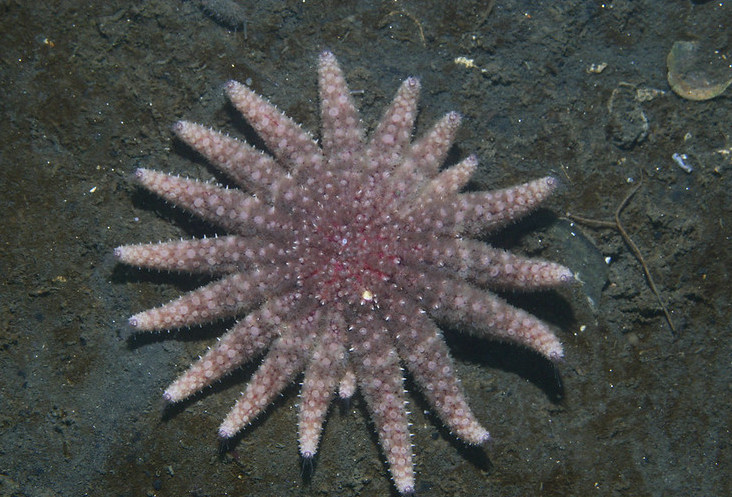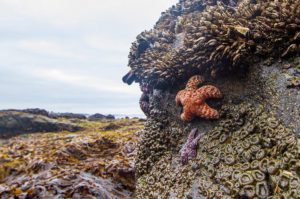
By DANA TIMS/YachatsNews.com
A massive die off of the iconic sunflower sea star has resulted in the species’ new listing as critically endangered by a key international conservation organization.
Population studies spearheaded by Oregon State University and The Nature Conservancy underpin the listing, which was announced last week by the International Union for Conservation of Nature.

“These sea stars used to be easy to find and were a hit with students and divers because they are unforgettable – they can be as big as a trash bin lid with 20 slimy arms covered in suction cups,” Sarah Gravem, a research associate in OSU’s College of Science and the lead author on the study, said in a statement. “Unfortunately, your chances of finding one now are next to nothing in most of the contiguous United States.”
Scientists used more than 61,000 population surveys from 31 datasets to calculate a 90.6 percent decline in the sunflower sea stars. They estimated that as many as 5.75 billion animals died from the disease, whose cause has not been determined, according to OSU’s statement.
In fact, only seven observations of any sunflower stars off the Oregon coast have been reported by anyone, from professional researchers, to divers, to citizen reporters, in the past three years, Gravem said in an earlier interview with YachatsNews.

Their fate has been very different from the smaller, mussel-eating orange and purple ochre stars, which populate tide pools close to shore. They have rebounded impressively from the same “wasting event” that decimated their numbers in 2013 and 2014.
Scientists still don’t fully understand what caused either outbreak, which caused healthy adult sea stars to first show lesions before literally melting into a gooey, broken-armed mess. Possible causes are thought to include a virus, warming ocean waters, human impacts or a combination of any or all of those.
Sunflower sea stars are considered critical because they are a “keystone predator” of purple sea urchins. With sea stars almost non-existent, urchin populations have exploded, leaving them to feast unfettered on the large, off-shore kelp forests that historically have hosted near-countless populations of marine animals and helped support coastal economies.
“Because most people aren’t out in the ocean every day, we don’t realize how much it’s being changed and impacted by humans,” study co-author Sara Hamilton, a Ph.D. candidate in the OSU College of Science, said in the same statement. “We need to think creatively about how to keep our ocean healthy. While drawing down carbon emissions is the most pressing need, rebuilding key predator populations, like the sunflower sea star, can be an important piece of the puzzle too.”
Gravem said her research has convinced her that sunflower sea stars may not recover without assistance in the form of captive rearing and reintroduction, and reducing direct and accidental harvest.
Two sea star captive breeding programs are now underway in Washington, Gravem said. If successful, the programs could determine how to reproduce sea stars in captivity and how, when and where to successfully introduce them to the sea.


